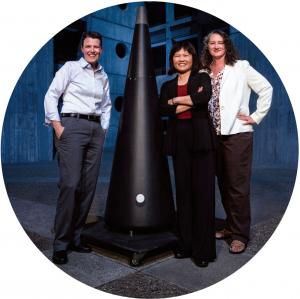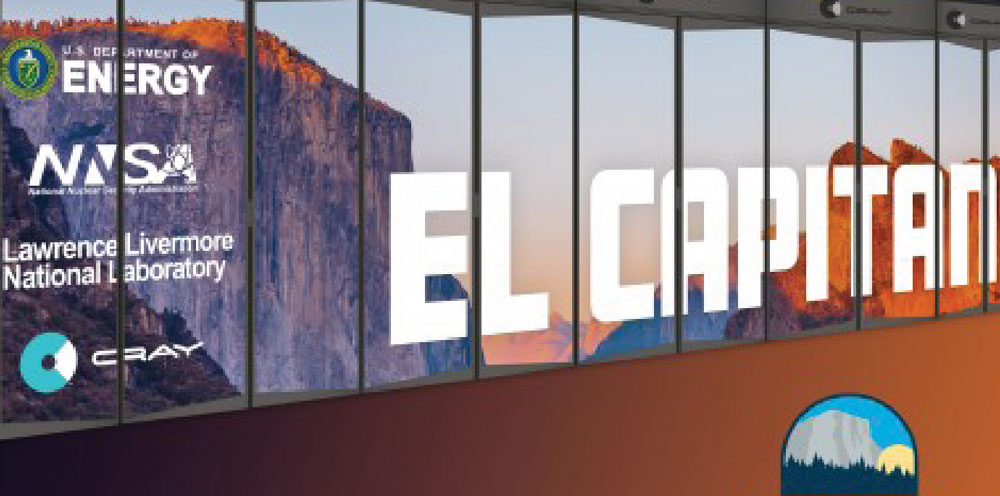LLNL's foremost responsibility is to ensure the performance of the nation's nuclear arsenal. The knowledge gained through experiments, theory, and simulations is applied to assess the condition of stockpile weapons and to develop and certify needed modifications with confidence in the absence of additional nuclear tests.
Annual Stockpile Assessment
In FY 2019, LLNL completed Cycle 24 of the annual stockpile assessment. The process included a formal comprehensive peer review by the nuclear design laboratories (Livermore and Los Alamos) of each other's weapons systems. Laboratory scientists continue to improve the predictability of physics and engineering simulation codes that support the annual assessments and certification of weapons. LLNL completed all planned milestones for weapons surveillance activities and performed associated testing and analyses to assess the condition of and sustain the B83, W78, W80, and W87 stockpile systems.
The W80-4 and W87-1 Programs
LLNL is partnered with Sandia National Laboratories as the design agencies to develop and certify the W80-4 warhead for the bomber-delivered Long-Range Standoff missile. The Laboratory is making excellent progress in the life-extension program (LEP), which transitioned from Phase 6.2A to Phase 3 (engineering development) in February 2019. Efforts are directed toward executing detailed plans, prepared in Phase 6.2A, for all development activities from design and certification to the end of production at the NNSA plants. The project team has finalized most of the major design decisions about the nuclear explosives package (NEP). The plans to refurbish or replace aging components and materials include use of new manufacturing methods that minimize costs, increase throughput, and reduce the need for environmentally sensitive materials and processes.
In FY 2019, the Laboratory also restarted Phase 6.2 (program feasibility) work on the W87-1 modification program, which will support deployment of the U.S. Air Force's Ground Based Strategic Deterrent by 2030. LLNL is NNSA's design agency for the NEP for a ballistic-missile warhead to replace the aging W87-0. The W87-1 will be the first modern warhead that is 100 percent newly manufactured. The design will have a strong nuclear test–based pedigree. Activities are focused on technology maturation and design options amenable to modern manufacturing methods. The W80-4 and W87-1 programs require the full array of NNSA's computational, experimental, and manufacturing capabilities to meet all the prototyping, proof-of-concept testing, and certification requirements.
Sierra Supercomputer in Operation
In October 2018, NNSA, LLNL, and industry partners officially unveiled Sierra at a dedication ceremony. The IBM/NVIDIA supercomputer has reached 94.6 petaflops (quadrillion floating-point operations per second) in a benchmark test, placing it as the world's second fastest supercomputer on the TOP500 List. This latest NNSA Advanced Simulation and Computing (ASC) Program machine makes possible higher fidelity, more predictive simulations of weapons performance, and it provides the ability to run large ensembles of simulations to quantify uncertainties in predictions. After a period of shake-out and testing codes, Sierra became generally available for classified use at the end of April.
Sierra achieves its extreme speed by using NVIDIA graphics processor units together with IBM central processing units in a heterogeneous architecture. The years of work by LLNL computer scientists preparing codes to run efficiently on the new architecture paid off. Simulations of high importance for classified work are running more than 10 times faster than with a homogeneous architecture on a per node basis. Sierra is providing vital support to the W80-4 LEP by making routine what had been "heroic" high-resolution, 3D simulations. The machine is proving to be a "game changer" for the NNSA laboratories. The success of Sierra raises expectations even higher for what will be possible with El Capitan (see the box below).
Stockpile Stewardship Experiments
In FY 2019, LLNL performed more than two dozen experimental campaigns at remotely located Site 300, including about 20 hydrodynamic experiments fired in the Contained Firing Facility (CFF). Several key shots in CFF supported downselect decisions for the W80-4 LEP and another national security program. Livermore also successfully executed its first subcritical experiment since 2003. Conducted at the Nevada National Security Site in collaboration with Los Alamos and the Atomic Weapons Establishment, the test yielded high-quality data in support of stockpile safety. Many more experimental activities are underway at LLNL's High Explosives Applications Facility and Site 300 to qualify and remanufacture additional insensitive high explosives to be used in the refurbished W80-4 warheads.
Tests at the Joint Actinide Shock Physics Experimental Research (JASPER) Facility and the National Ignition Facility (see National Ignition Facility) provide essential data about plutonium and other materials at extreme conditions. Experiments at JASPER in FY 2019 collected high-precision data about shock-compressed plutonium.
Discovery Science at NIF
Discovery Science experiments at NIF provide unique opportunities to answer challenging questions about HED science and advance knowledge in nuclear physics, plasma physics, materials science, and astrophysics. In many cases, experiments have required development of new types of diagnostics that have become very useful for national security applications or have led to significant scientific breakthroughs. In FY 2019, LLNL researchers and collaborators published results of proton-acceleration experiments in the journal Physics of Plasmas. Using NIF and ARC, the team produced beams of protons with 10 times more energy than expected—14 to 18 million electronvolts. Such beams can be precisely targeted on materials and provide new ways for studying extreme states of matter, such as that found in stellar and planetary interiors. Proton acceleration has potential for many other applications in HED science and ICF research.
NNSA's First Exascale Computer: El Capitan
In August, DOE, NNSA, and LLNL announced the signing of contracts with Cray Inc., to build El Capitan, NNSA's first exascale supercomputer. El Capitan's expected peak performance is more than 1.5 exaflops (quintillion floating-point operations per second). To be delivered in late 2022, the $600-million supercomputer will run complex simulations roughly 10 times faster than Sierra and operate with 4 times higher energy efficiency. It will support projects at the three NNSA national laboratories.









